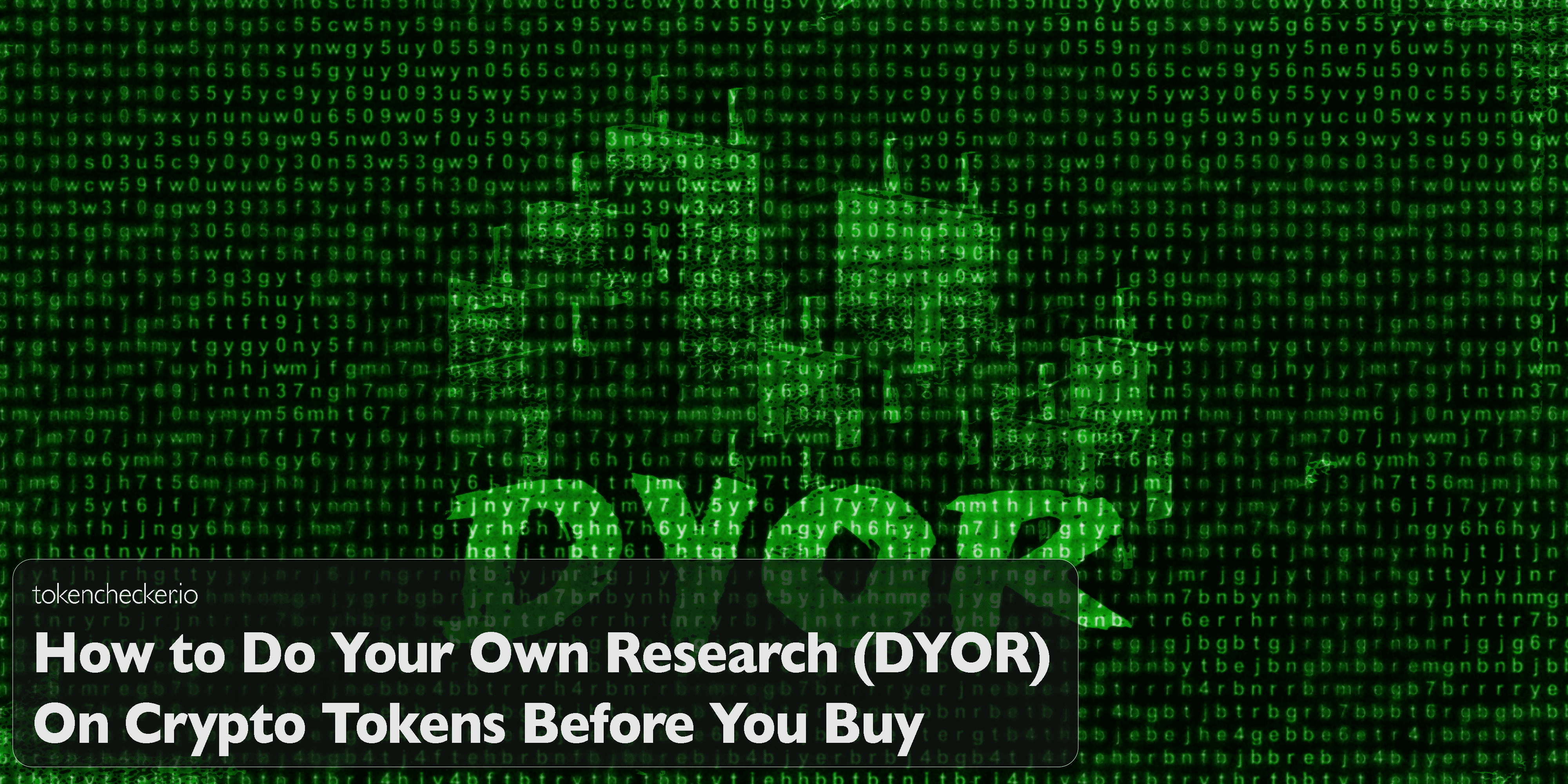
How to Do Your Own Research (DYOR) on Crypto Tokens Before You Buy
Introduction
You hear it everywhere: “DYOR.” But what does that actually mean?
Most people throw it around like a safety net. If a project rugs, hey it’s your fault for not doing enough research, right? But in crypto, “doing your own research” isn’t just a slogan. It’s survival.
The scams are slicker. The tokens launch faster. And if you’re not digging deeper than the hype, you're not investing you're gambling blind.
So let’s break it down. Here's how to actually DYOR in a way that protects your wallet, filters out noise, and helps you spot real opportunities in a sea of red flags.
Start With the Basics: What Does the Token Claim to Do?
First question: what’s the token for?
If the answer sounds like this—“decentralized ecosystem for next-gen community-powered blockchain gaming DAO revolutionaries” pause. That’s not a use case. That’s marketing soup.
Instead, ask:
- What problem is it solving?
- Who is it solving it for?
- Why does this need a token at all?
If you can’t answer that in one sentence, there’s a good chance the project itself can’t either.
Read the Whitepaper (But Don’t Get Lost in the Fluff)
A legit whitepaper should cover:
- The problem
- The solution
- Tokenomics (how tokens are distributed and used)
- Roadmap
- Team
- Security
- Legal or regulatory disclaimers
If it's vague, overly technical with no clear business logic, or feels AI-generated? That’s a red flag.
Also—check the version history. If the whitepaper hasn’t been updated since launch, either the team isn’t evolving or they don’t want you to know what changed.
Check the Team (Or Lack of One)
Are they doxxed? Do they have LinkedIn profiles, GitHub commits, real past projects?
If the team is anonymous, that’s not always a dealbreaker but it raises the bar. The code, transparency, and community need to be bulletproof to make up for it.
Also check: has this team launched anything before? Good or bad? Did they quietly disappear from a previous project? tokenchecker.io can help track wallet and developer overlap between projects.
Tokenomics: Who Gets What, and When?
This is one of the most overlooked areas in DYOR.
Ask:
- How many tokens are there total?
- How many are in circulation?
- What’s the vesting schedule for insiders and the team?
- Are there deflationary mechanics, burns, or taxes?
If 40% of supply is unlocked and sitting in dev wallets with no vesting, that’s not a community token. That’s a waiting dump.
Liquidity and Market Behavior
Check how the token trades. Does it have:
- Locked liquidity? (If not, devs can pull the floor anytime)
- Reasonable slippage and fees?
- Sudden volume spikes that don’t match social hype?
- Wallets trading back and forth to simulate demand?
You can track a lot of this on-chain, but tools like tokenchecker.io make it easier flagging contract permissions, liquidity strength, and trade behavior in seconds.
Smart Contract Audit? Or Just a Badge?
Don’t trust an “audit” logo unless it links to a real report. And even then read it.
You’re looking for:
- Who audited it? (SolidProof, CertiK, PeckShield, etc.)
- Were any critical issues found?
- Were they fixed or ignored?
- Is the audit recent, or from an early version of the contract?
Many scams get “audited” before launch, then deploy a totally different contract.
Check Socials (But Don’t Let Follower Count Fool You)
Real communities talk about more than price. They ask questions, critique updates, and dig into features.
Watch out for:
- Telegram groups full of “When Lambo?” and nothing else
- Twitter accounts with 100K followers and 2 likes per tweet
- Influencers who suddenly vanish after launch
- Discords where only mods talk
And if the devs ban people asking legit questions? That’s not a community—it’s a PR cage.
Understand the Roadmap (And What’s Actually Been Delivered)
A roadmap should be specific and trackable. Stuff like:
- “Launch DEX integrations by Q2”
- “Token staking live by January”
- “Mobile wallet v1 shipping by March”
If all you see is “Community Building” or “Phase 3: Moonshot,” they’re buying time. Worse, some rugs use fake roadmaps to drag things out while they dump.
Use tokenchecker.io to cross-check these milestones with on-chain behavior. If funds are moving out while nothing is getting shipped? Time to walk.
Final Thoughts
DYOR isn’t a box to check it’s a skill you build.
The more you do it, the faster you’ll see patterns. The fluff. The fake engagement. The recycled scams with new names.
And on the flip side, you’ll also recognize real builders. Clean code. Transparent wallets. Teams who show up. Communities that ask the right questions.
DYOR means taking responsibility before you invest not after. Tools like tokenchecker.io help you speed that up, but the instinct? That’s yours.